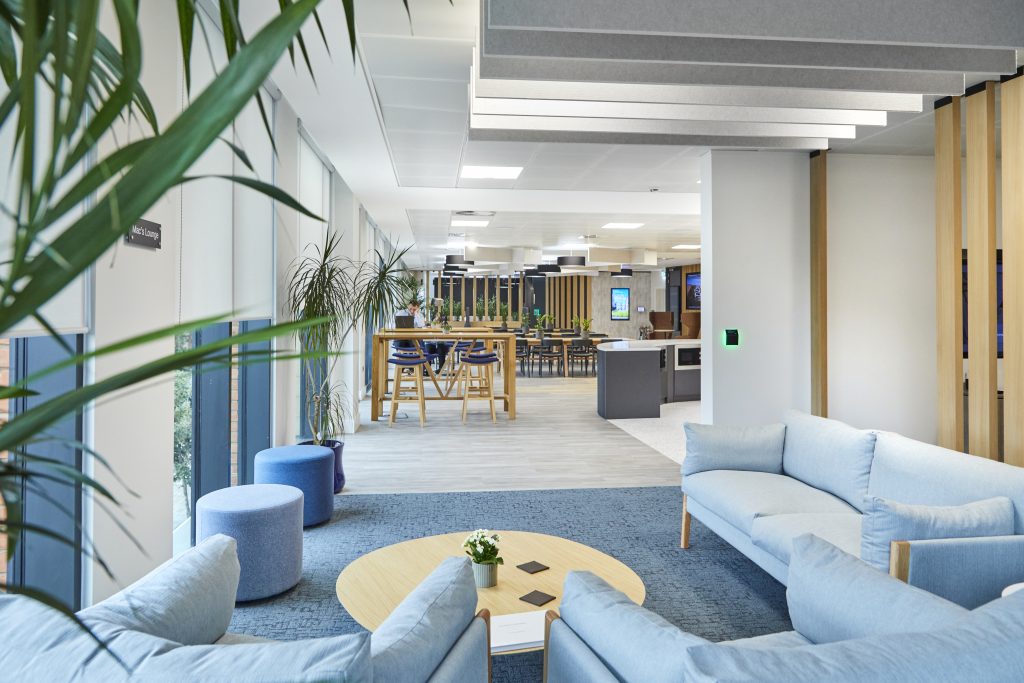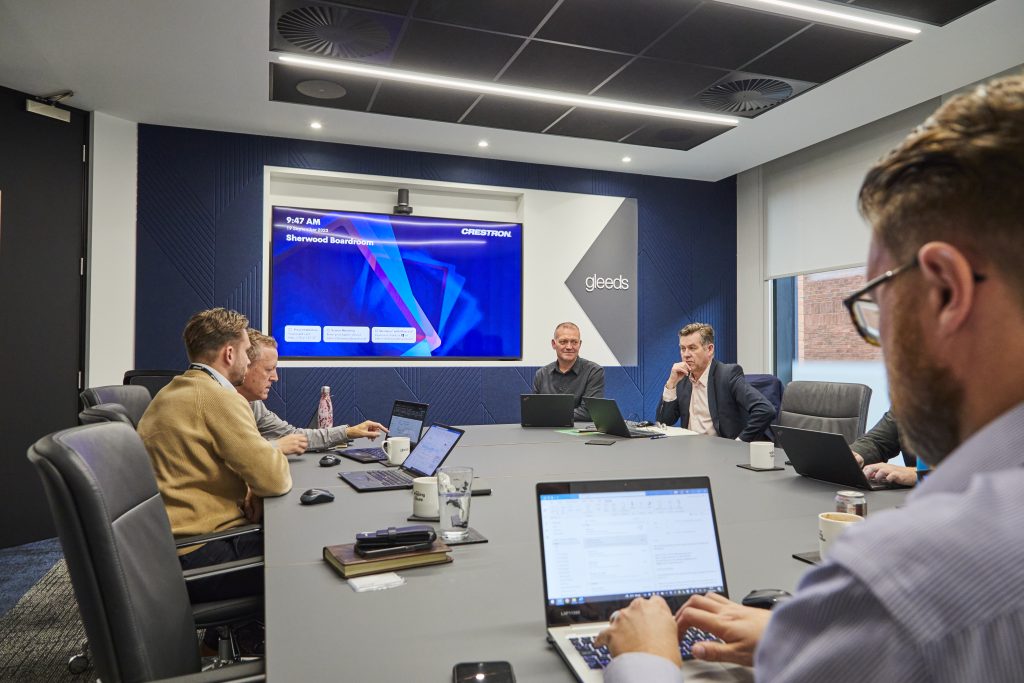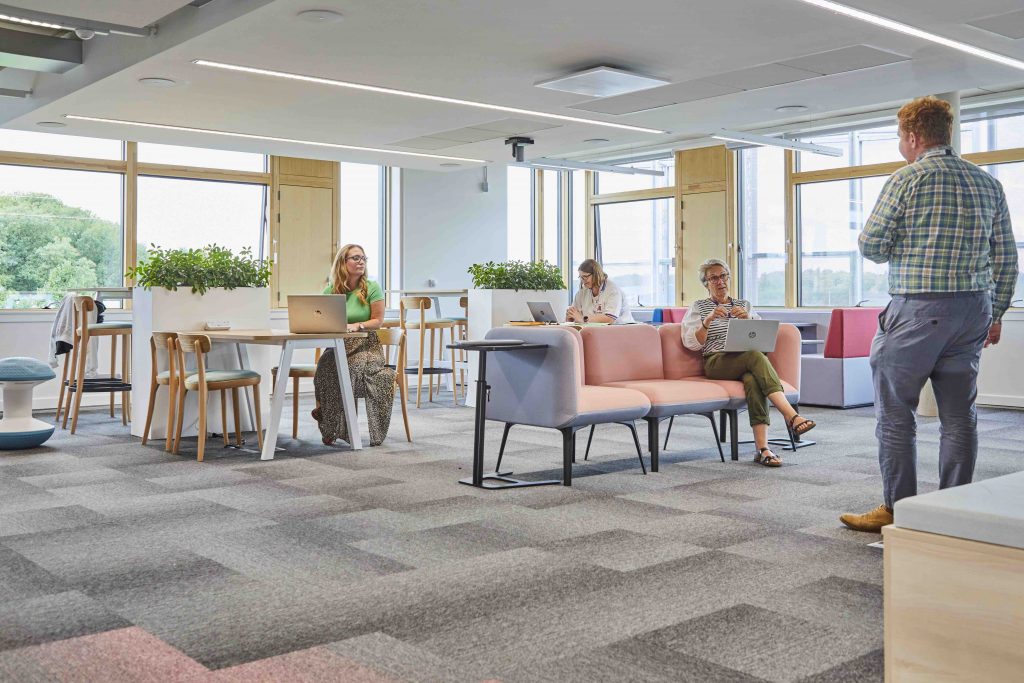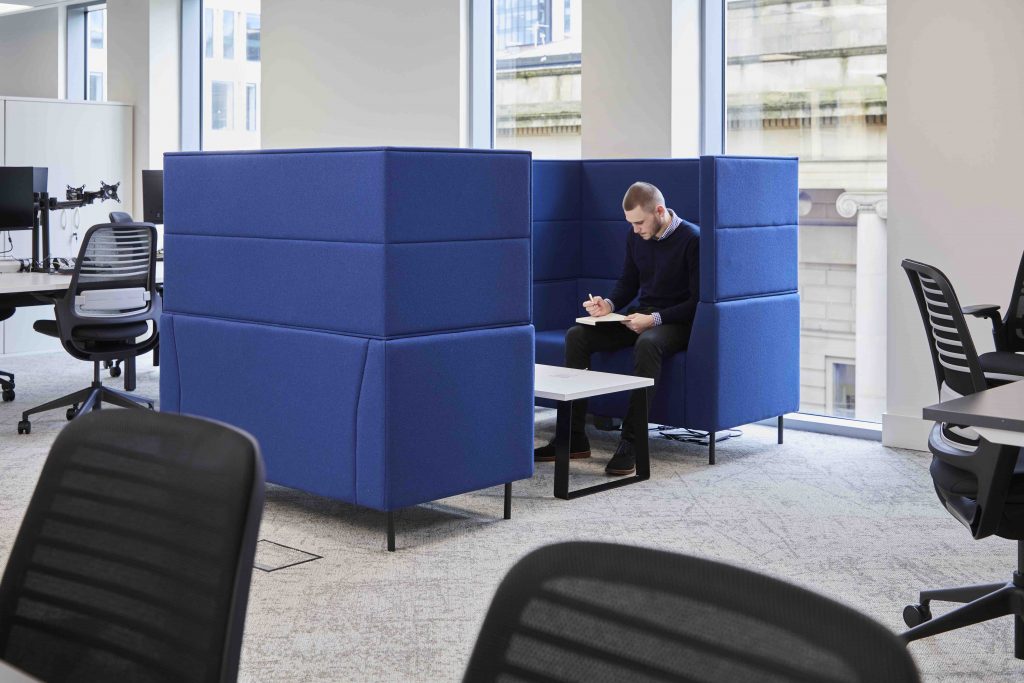9th Jan 2024
What is Agile Working? Our Top Tips for Workplace Success
The term ‘agile working’ has been used to describe various ways of working over the years, which has made things a little confusing when trying to define what it really means when it comes to working in an office.
So, what does it really mean and how can creating an agile office (both in design and culture terms) benefit your organisation?
And how can your physical workplace support agile working? We share our top tips.
Agile Working: The definition
The Agile Organisation definition is the most widely used and, the most helpful in understanding the term agile working;
“Agile working is about bringing people, processes, connectivity and technology, time and place together to find the most appropriate and effective way of working to carry out a particular task. It is working within guidelines (of the task) but without boundaries (of how you achieve it).”

What does ‘agile office design’ mean?
For your people to succeed at agile working, your office spaces need to facilitate it. Rows and rows of desks with no breakout spaces or collaboration areas won’t work.
At a time when people are rethinking the purpose and use of their workplaces, creating an agile office can have the following benefits:
- a more ‘fit for purpose’, activity-based office where people can move between spaces based on their needs at any given time
- increased employee wellbeing and satisfaction
- facilitate seamless hybrid and remote teamwork
- less floor space required, as spaces are adaptable
For example, if you create a space with the tech and flexible furniture needed to cater to board meetings as well as more informal workshops, or hybrid calls – the same space can easily work for different scenarios.
Top 5 features of agile office design
Modular Furniture
Invest in modular desks, chairs, and storage units that you can move or reconfigure easily. This gives you more options for how to use the space and eliminates frustrations regarding spaces that aren’t suitable for their intended purpose.
Multipurpose Areas
As well as flexible areas, it’s useful to have designated zones around the office for various purposes. For instance, create areas for informal meeting spaces, collaboration zones, or individual workstations. Ensure these spaces can change easily with movable walls or foldable furniture to suit different needs during the day.
When you plan your space, consider how your team will use it in practice. Don’t put a busy area near a place where people can go to work quietly and concentrate.
Technology Integration
Incorporate technology that allows people to move around and work how and where they feel is best. This could involve wireless charging stations, portable screens or monitors, and easily accessible power outlets.

Here are a few of our favourite examples of integrated tech that enables agile working:
- sofas with integrated power points and cup holders liberate people from their desks
- portable power banks for areas that don’t have integrated power points
- movable presentation screens
- meeting rooms with seamless remote screen-sharing and video calling capabilities
All these examples support different work configurations without people needing to be tethered to a specific spot. More importantly, it enables people to get all the benefits that a change of scenery provides (creativity and productivity to name a few).
Adjustable Lighting and Acoustics
Install adjustable lighting systems and acoustics that can move or change based on the activities within a space. A simple example would be using an acoustic panel divider with a whiteboard on one side to turn an open seating area into a focused meeting space.
Introducing adjustable lighting could create new uses for certain areas too. For example, if you have a communal social area for daytime use, having lower-level lighting in the evening could make for a great event space!
Remote Accessibility
How many times have you been frustrated by poor tech when setting up for video calls? That’s why offices need to adapt to keep up with hybrid and remote working styles. We’re using tech all day every day and it needs to help, not hinder.
Create a seamless blend of physical and virtual spaces by incorporating technology for virtual meetings, collaborative digital tools, and accessible cloud-based resources so that employees can work effectively from anywhere.
How does agile working succeed in practice?
There’s no ‘one size fits all’ approach to agile working. An agile office design that fits one individual or organisation may feel completely wrong for another. So before you embark on any office transformation, ask your people’s opinions.
Beyond an agile office design, here are some of the fundamentals for adopting an agile culture.
- Provide your staff with spaces they can go to focus, collaborate with others, or to connect with colleagues working remotely
- Give your team a level of autonomy, and trust them by letting them actually have it
- Create strong bonds within your team, team building activities are a good starter
- Utilise technology, especially if you’re introducing flexible working practices
- Have a structure, this may sound counterintuitive but factors such as flexible working and giving employees autonomy require some boundaries, even if they aren’t rigid.
Practically, an agile workplace may adopt some of the following characteristics:
1. Hybrid or remote working options
Most companies offer some form of remote or hybrid working options for their people now. If you’re not, you’re lagging behind. Companies offering these types of incentives have previously reported successful outcomes such as increased productivity and less employee turnover.
Showing you trust your employees to work at home, or anywhere that isn’t the office, is a huge incentive for your people.
2. Less pressure on job titles
Agile work environments often allow more fluidity in job roles and the division of labour, making work more varied and interesting for employees.
Whilst it’s important for people to understand their role, it’s understanding the value of their work that improves employee happiness and satisfaction in many cases.
3. Prioritisation of speed
Agile working cultures prioritise speed when carrying out tasks or in decision-making. The fluidity in job roles and less formal rules and regulations complement this. More people are available to complete any given task and feel empowered to do so in a way that suits them.
4. A space that supports agile working
Possibly most importantly, an agile organisation provides spaces for their staff to adopt agile working approaches. Giving staff space to focus, collaborate or to use technology to connect with a colleague working remotely are all examples of how your business can facilitate an agile culture.

Is agile working the same as flexible working?
In short, no. Agile working goes beyond flexible working in that an agile approach can be applied wherever and whenever you are working.
By its very nature, it’s about what works best to enable an organisation to carry out its activities as efficiently as possible. This can relate to how your office is physically designed as well as the culture of your workplace. Flexible working (where and when you work) may be a part of this, but being agile also encompasses how work is carried out and by whom.
Ultimately, this encourages maximum flexibility with minimum constraints.

Create an Agile Work Environment
If you’re looking to transform your workplace into a more productive, efficient and successful environment in which your employees can thrive, we can help.
To speak to one of our workplace consultants, get in touch.